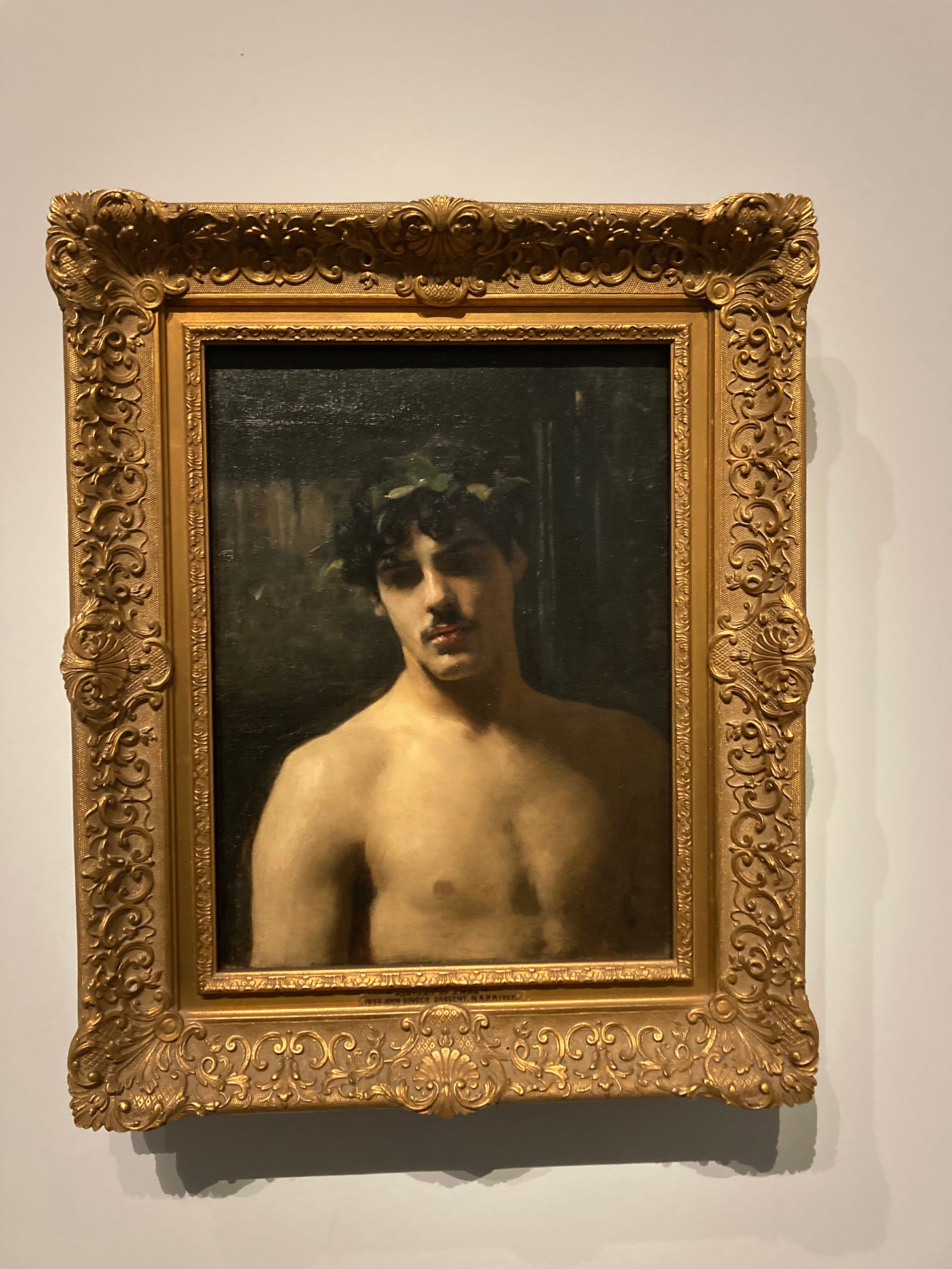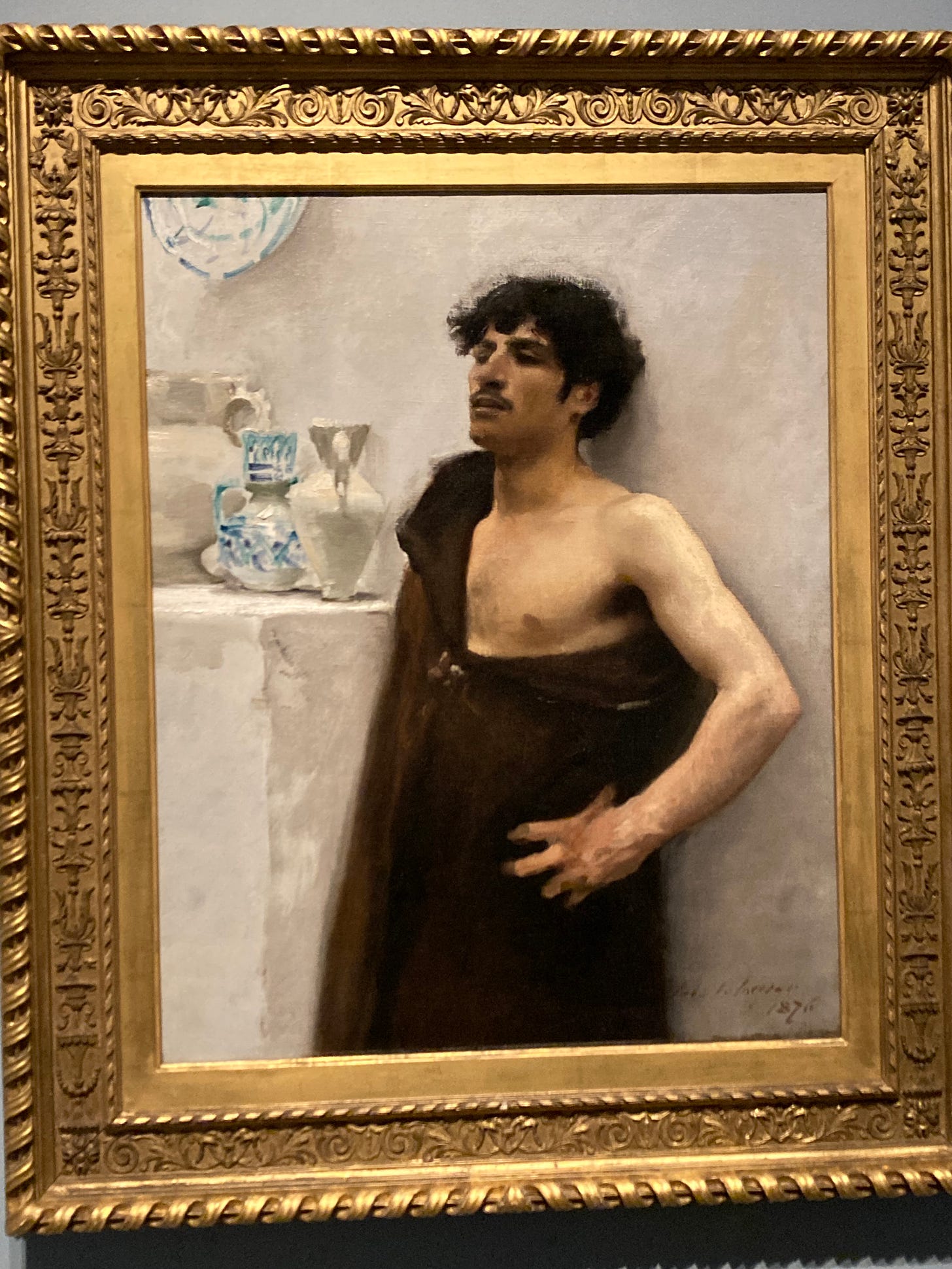Tomorrow we officially start Pride month, and at the Metropolitan Museum of Art’s Sargent exhibit, I found a timely example of the intersection between homoeroticism and the Black Madonna, a meeting-point that’s been going on for centuries.
As soon as I entered the first room of the exhibit, I thought, “Was Sargent gay?” My curiosity was echoed by two other gay men I know who attended the exhibit, wondering about his orientation at the exact same point that I did. The attending placards of the exhibit intimated as much in a brief nod to the possibility, couched in countless qualifiers, because what could be worse than getting this wrong, smearing someone as a homo without the fin de siècle equivalent of a sex tape on record (never mind he was “close friends” with a youth for most of his life, a friend he addressed as “baby” in the letters he wrote to him, a close friend he used as a stand-in for the female models when they weren’t available; never mind that no one ever found Sargent’s personal papers after he died, because he was intensely private, as were all the gays at the time, because he was a lifelong “bachelor” – if it looks like a duck and quacks like a duck…).
Three paintings alerted to me to his predilection for men and for, as my mother put it, a certain type – they were all Italianate, curly-haired, mustachioed, well-figured guys, painted with a Grecian eroticism that’s hard to ignore.
In the same room is the painting below, a woman dancing on a rooftop, the moon rising over the hills, while another accompanies her on a drum. But this isn’t just any drum, it’s the tammorra, the famed drum of Southern Italy that’s used for a rhythm called the tammorriata, which is played in honor of the Black Madonna, often the Black Madonna of Montevergine. This particular shrine was built over an ancient temple to Cybele, the Great Mother of the European continent, whose worship spread widely after She gained elite status in the Roman pantheon for saving the city from Hannibal’s invasion. Once the Christians take power and murder women, goddess worshippers, gays, and third-gender folk, Cybele goes underground, literally. It’s not until the Medieval era that statues and icons of Black women are found in agricultural fields, caves, and in the hollows of trees, allowing the populace to worship the goddess without getting trouble with the church authorities. Because it’s Mary, right?
At Montevergine, outside Naples, gay men and non-binary types yearly celebrate the patron Virgin of LGBTQ people on February 2nd during the festival of Candelora, and they do it with the drums pictured in this painting, as well as song and erotic dances.
Homoeroticsm. Gender variance. The Black Madonna. Again and again, these interwoven themes surface to remind us we are sacred, we are holy, we are as much the creation as anyone else, and we are loved by Her.








Great piece!